- No products in the cart.
Dorzolan extra drop of Ch. 20mg / ml + 5 mg / ml 5 ml vial
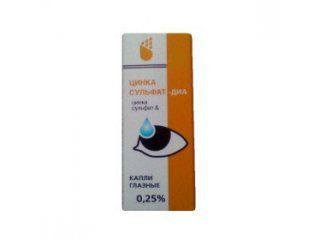
Zinc sulfate-dia drops Ch. 10ml vial, cap.
$1.84
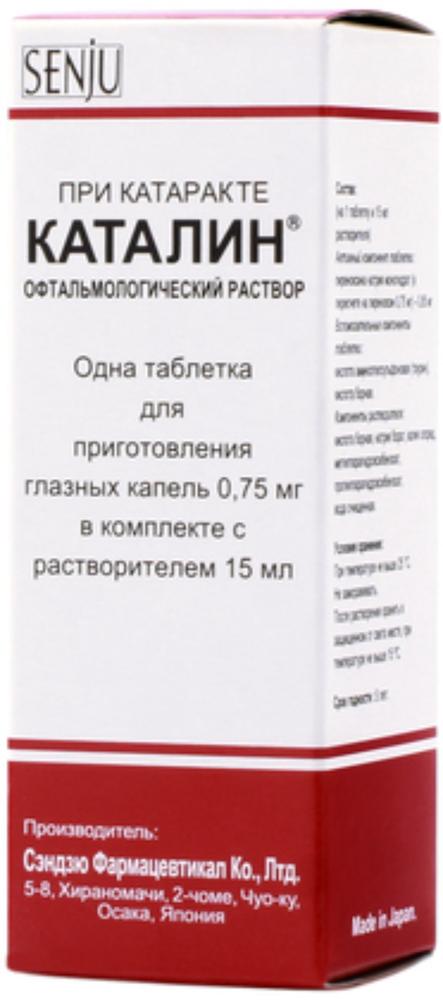
Katalin tab for prig.kapel Ch. + 0.75mg solvent 15ml vials.
$12.34
$16.27
Dorzolan extra drop of Ch. 20mg / ml + 5 mg / ml 5 ml vial
SKU: 01265315267 Categories: Glaucoma, Medicaments, Ophthalmology Tags: =+ dorzolamide with timolol, Grotex Ltd.
Description
Composition
Active substance:
Dorzolamide hydrochloride 22.26 mg per 20,0 mg dorzolamide
Timolol maleate 6.83 mg per 5.0 mg of timolol
Excipients:
Sodium citrate dihydrate 2.94 mg
Sodium hyaluronate 1.80 mg
Mannitol 16.0 mg
1 M sodium hydroxide solution to pH 5.6
Water for injection ad 1 ml
Description:
Clear, colorless or almost colorless, slightly viscous liquid.
Product form:
Eye drops of 20 mg / ml + 5 mg / ml.
5 ml plastic vials, equipped with drip spout.
1 bottle together with instructions for use in a stack of cardboard.
Contraindications
Airway hyperresponsiveness, asthma, bronchial asthma history, severe chronic obstructive pulmonary disease.
Sinus bradycardia, sick sinus syndrome, sinoatrial block, atrioventricular block II-III extent without the pacemaker expressed heart failure, cardiogenic shock.
Severe renal impairment (creatinine clearance less than 30 mL / min) or hyperchloremic acidosis.
Degenerative processes in the cornea.
Pregnancy and breast-feeding.
Hypersensitivity to any component of the drug.
Children up to age 18 years (due to lack of efficacy and safety).
Carefully
As with other ophthalmic drugs used topically, can be absorbed into the systemic circulation. As part of the drug is timolol beta-blocker, side reactions developing in systemic administration of beta-blockers, may occur in the local application of the drug.
Reactions from the cardiovascular and respiratory system
Patients with cardiovascular diseases in history, including heart failure, should be closely monitored for signs of deterioration of these diseases. These patients need to monitor your pulse.
Patients with heart block I degree should be given beta-blockers with caution due to their ability to slow the conduction of impulses.
Account reports of cases of bronchospasm with a fatal outcome in patients with bronchial asthma and cases of heart failure deaths during treatment with timolol maleate eye drops.
Patients with chronic obstructive pulmonary disease of mild to moderate severity of the drug should be administered with caution and only if the expected benefit of the treatment outweighs the potential risk.
The drug should be administered with caution to patients with severe peripheral circulatory disorders (severe forms of Raynaud’s disease or Raynaud’s syndrome).
Hypoglycemia in patients with diabetes
Beta-blockers should be administered with caution to patients susceptible to spontaneous hypoglycemia, or patients with diabetes (especially labile course of diabetes), in patients receiving insulin or oral hypoglycemic agents. Beta-blockers may mask the signs and symptoms of acute hypoglycemia.
thyrotoxicosis
Beta-blockers can mask some of the clinical signs of hyperthyroidism (e.g., tachycardia). If you suspect that the development of hyperthyroidism patients should be monitored carefully. It is necessary to avoid abrupt withdrawal of beta-blockers because of the risk of development of thyrotoxic crisis.
Anesthesia in surgery
The need for the abolition of beta-blockers in the case of the upcoming major surgery has not been proven. If necessary, during operation effects of beta-blockers can be eliminated by application of sufficient doses of agonists.
Abnormal liver function
No studies of the drug in patients with hepatic impairment, therefore the drug in such patients should be used with caution.
Allergies and hypersensitivity
As with other ophthalmic preparations for topical use, extra Dorzolan® can enter the systemic circulation. Part of the drug is dorzolamide sulfanilamide. Thus, side reactions identified in systemic administration of sulfonamides, may occur in the local application of the drug (Stevens-Johnson syndrome and toxic epidermal necrolysis). If signs of serious hypersensitivity reactions to the drug should be discontinued.
In the treatment of beta-blockers in patients with severe atopy or anaphylactic reactions to various allergens may gain a history response when re-exposed to these allergens. In this group of patients receiving epinephrine in the standard therapeutic dose used for the relief of allergic reactions can be inefficient.
concomitant therapy
When using the drug Dorzolan® extra patients who take systemic beta-blockers, it is necessary to consider the possible mutual enhancing the pharmacological action of drugs in relation to the known systemic effects of beta-blockers, and in reducing intraocular pressure.
The combined use of the drug with other beta-blockers is not recommended.
Discontinuation of treatment
If necessary, cancel the topical timolol, as is the case with systemic beta-blockers, discontinuation of therapy in patients with coronary heart disease should be carried out gradually.
Violations by the cornea
Used in ophthalmology beta-blockers can cause dry eyes. Patients with disorders of the corneal drug should be administered with caution.
Patients with low endothelial cells have an increased risk of corneal edema.
Urolithiasis disease
The use of carbonic anhydrase inhibitors can lead to acid-base equilibrium and accompanied urolithiasis, particularly in patients with a history of urolithiasis. During the application of the preparation of such violations were observed, of urolithiasis posts were rare. Since the drug enters carbonic anhydrase inhibitor, which when applied topically can be absorbed and enter the systemic circulation, the risk of urolithiasis in patients with urinary stone disease history may be increased in the treatment of drug Dorzolan® extra.
Miscellaneous
In patients with acute angle-closure glaucoma in addition to the appointment of agents that reduce intraocular pressure that require other therapeutic measures. Studies of the drug in patients with acute angle-closure glaucoma have been conducted.
Use in the elderly
49% of patients in clinical trials of the drug were 65 years of age and terrible, 13% of patients – aged 75 years and older. Differences in efficacy and safety in this age group was not compared with younger patients. Nevertheless, we should not exclude the possibility of a higher sensitivity to the drug in some elderly patients.
Dosage
20 mg + 5 mg / ml
Indications
The drug used for the treatment of elevated intraocular pressure in open angle glaucoma and pseudoexfoliation glaucoma monotherapy with insufficient efficiency.
Interaction with other drugs
Specific drug interaction studies Dorzolan® Extra with other drugs was conducted. However, it is possible to enhance the hypotensive effect and / or severe bradycardia in the combined use ophthalmic solution of timolol maleate and systemic calcium channel blockers, catecholamine-depleting agents, beta-blockers, antiarrhythmics (including amiodarone), digitalis glycosides, parasympathomimetics, opioid analgesics and monoamine oxidase inhibitors.
When the joint application of timolol and isozyme CYP2D6 inhibitors (e.g., quinidine or selective serotonin reuptake inhibitors) reported potentiate the effect of systemic beta blockade (e.g., reduced heart rate, depression).
Despite the fact that a part of the carbonic anhydrase inhibitor dorzolamide drug is used topically, it can penetrate into the systemic circulation. In clinical studies, dorzolamide hydrochloride ophthalmic solution showed no disorders of acid-base equilibrium. However, these disorders are known for systemic use of carbonic anhydrase inhibitors and in some cases can affect the interaction with other drugs (e.g., toxicity associated with salicylate therapy in high doses). Consequently, the possibility of such interactions should be considered in patients receiving Dorzolan® extra.
Systemic beta-blockers may exacerbate hypo-
glycemic effect antidiabetic drugs and hypertension, is the effect of clonidine (clonidine).
Despite the fact that in the monotherapy Dorzolan® extra effect on the pupil is minimal or absent, there are individual descriptions of mydriasis with concomitant use of timolol maleate and epinephrine.
There is a possibility of systemic effects enhance the inhibition of carbonic anhydrase in the combined use of local and systemic carbonic anhydrase inhibitors. Since data on the use of such a combination is absent, the combined use of the drug extra Dorzolan® and systemic carbonic anhydrase inhibitors are not recommended.
Overdose
Data on accidental or deliberate overdose of the drug available.
There are cases of unintentional overdose of timolol maleate eye drops with the development of systemic effects of an overdose of beta-blockers Systemic: dizziness, headache, shortness of breath, bradycardia, bronchospasm, cardiac arrest. Most expected dorzolamide overdose symptoms are disorders of electrolyte balance, acidosis development, possible side effects on the central nervous system.
Treatment of overdose is symptomatic and supportive. It should control the level of the electrolyte (especially potassium) and pH of the blood plasma. Timolol is not displayed by dialysis.
pharmachologic effect
Pharmacological group:
Dorzolamide hydrochloride – (local) carbonic anhydrase inhibitor;
Timolol maleate – (local), beta-adrenergic receptors.
ATC code: S01ED51
Pharmacodynamics:
The drug comprises two active components: dorzolamide hydrochloride and timolol maleate, each of which reduces elevated intraocular pressure by reducing the intraocular fluid secretion. The combined effect of these substances in a combined preparation Dorzolan® extra leads to a more pronounced reduction of intraocular pressure.
Dorzolamide hydrochloride is a selective inhibitor of carbonic anhydrase II type.
Inhibition of carbonic anhydrase ciliary body leads to a reduction of intraocular fluid secretion, presumably by reducing the formation of carbonate ions, which in turn leads to slower transport of sodium and fluids.
Timolol maleate is a nonselective beta-blockers. Although the exact mechanism of action of timolol maleate in reducing intraocular pressure has not yet been set, a series of studies have shown a preferential reduction in the formation of the intraocular fluid, as well as a slight enhancement of its outflow.
Pharmacokinetics:
dorzolamide hydrochloride
When applied topically, dorzolamide enters the systemic circulation. With prolonged use dorzolamide accumulates in erythrocytes as a result of selective binding to the carbonic anhydrase II type, maintaining an extremely low concentration of free drug in the plasma. As a result of metabolism dorzolamide formed only N-dezetilny metabolite which is less pronounced blocks carbonic anhydrase II type compared to its initial shape, but at the same time inhibits carbonic anhydrase type I – less active isoenzyme. Metabolite also accumulates in erythrocytes, which is associated mainly with carbonic anhydrase I type. About 33% dorzolamide is bound to plasma proteins. Dorzolamide excreted in the urine in unchanged form and as a metabolite. After termination of the drug dorzolamide nonlinear washed erythrocytes from that initially leads to a rapid decrease of its concentration, followed by elimination is slowed. T1 / 2 is about 4 months.
When receiving dorzolamide inside, in order to simulate the maximum systemic exposure at the time of its topical application, a steady state was achieved within 13 weeks. At the same time there was virtually no free drug is detected, or its metabolites in the plasma. Inhibition of erythrocyte carbonic anhydrase was insufficient to achieve a pharmacological effect on renal function and respiration. Similar results were observed pharmacological prolonged topical application of dorzolamide hydrochloride. However, some elderly patients with renal failure (creatinine clearance (CC) of 30-60 ml / min) showed higher concentration of metabolite in the erythrocytes, but this had no clinical significance.
timolol maleate
The local application of timolol maleate penetrates into the systemic circulation. The concentration of timolol in plasma was studied in 6 patients with topical application of eye drops of timolol maleate 0.5% twice a day. The average peak concentrations after morning dosing was 0.46 ng / ml after a daily dosage – 0.35 ng / ml. The hypotensive effect occurs within 20 minutes after instillation, reaches a maximum at 2 hour and lasts at least 24 hours.
Pregnancy and breast-feeding
You should not use the drug during pregnancy and breastfeeding.
dorzolamide
Information on the use of dorzolamide in pregnant women is not enough. It is not known whether dorzolamide passes into breast milk of nursing women.
In studies in rats revealed a teratogenic effect of dorzolamide at doses toxic to pregnant females. In young females lactating rats receiving dorzolamide, found a decrease in body weight gain.
timolol
Information on the use of timolol in pregnant women is not enough. Timolol should not be taken during pregnancy, unless the use of timolol is vital.
Epidemiological studies have found no effect of oral beta-blockers in the development of congenital malformations, but revealed the risk of intrauterine growth. In addition, newborns were found signs and symptoms of beta blockade (bradycardia, hypotension, respiratory distress and hypoglycaemia) when beta-blockers were applied until delivery. If the drug is used before delivery, should carefully monitor the condition of the newborn in the first days of life.
Beta-blockers into breast milk. The attending physician must decide on the need to stop breast-feeding or discontinuation of the drug, taking into account the potential serious side effects on a child who is breastfed, and benefits of the drug to the mother.
Conditions of supply of pharmacies
Prescription.
side effects
The drug is generally well tolerated. In clinical studies, side effects of the combined preparation only, not observed. Adverse reactions were limited to the already known side effects of dorzolamide hydrochloride and / or timolol maleate. In general, systemic side effects were mild and did not lead to the elimination of the drug. In clinical studies, the drug was administered in 1035 patients. At about 2.4% of patients drug was withdrawn due to adverse local reactions on the part of the eye. Approximately 1.2% of patients the drug was canceled because of local allergic reactions. Among the most frequent adverse events were pruritus or burning sensation in the eye, distortion of taste, corneal erosion, conjunctival injection, blurred vision, lacrimation.
The Post-registration observation period following undesirable phenomena were noted: dyspnea, respiratory distress, contact dermatitis, bradycardia, atrioventricular block, choroidal detachment of the eye, nausea, Stevens-Johnson syndrome and toxic epidermal necrolysis. Cases of edema and irreversible destruction of the cornea in patients with chronic corneal defects and / or have undergone intraocular surgery.
Known possible side effects of the drug components:
dorzolamide hydrochloride
Headache, inflammation of the eyelid, irritation and flaking century, asthenia / fatigue, iridocyclitis, rash, dizziness, paresthesia, punctate keratitis, transient myopia (taking place after the drug), systemic allergic reactions, including angioedema, bronchospasm, urticaria and pruritus, epistaxis bleeding, throat irritation, dry mouth.
Timolol maleate (topical application)
On the part of the eye marked conjunctivitis, blepharitis, keratitis, decreased corneal sensitivity, dry; visual disturbances, including refractive changes in the ability of the eye (in some cases due to the cancellation miotikov), diplopia, ptosis; tinnitus, arrhythmia, hypotension, syncope, cardiovascular disorders, cardiac arrhythmias, heart failure, edema, claudication, paresthesia, Raynaud’s phenomenon, decreased hand temperature and feet, bronchospasm (predominantly in patients with a prior bronhoobsturktivnoy pathology), cough, headache боль, астения, усталость, боль в груди, алопеция, псориазоподобные высыпания или обострение псориаза; признаки и симптомы аллергической реакции, включающие анафилаксию, ангиоотек, уртикарную сыпь, локальные или генерализованные высыпания; dizziness; депрессия, бессонница, ночные кошмары, снижение памяти, нарастание симптомов миастении, диарея, диспепсия, сухость во рту, боль в животе, снижение либидо, болезнь Пейрони, сексуальная дисфункция, системная красная волчанка, миалгия.
Тимолола малеат (системное применение)
Боль в конечностях, снижение толерантности к физическим нагрузкам, атриовентрикулярная блокада II и III степени, синоаурикулярная блокада, отек легких, ухудшение артериальной недостаточности, ухудшение стенокардии, вазодилатация, рвота, гипергликемия, гипогликемия, зуд кожи, повышенное потоотделение, эксфолиативный дерматит, артралгия, головокружение, слабость, снижение концентрации внимания, повышенная сонливость, нетромбоцитопеническая пурпура, хрипы, импотенция, нарушение мочеиспускания.
При системном применении тимолола малеата клинически значимые изменения стандартных лабораторных показателей отмечались крайне редко. Описаны легкое повышение остаточного азота, калия, мочевой кислоты и триглицеридов плазмы крови; легкое снижение гемоглобина, гематокрита, холестерина липопротеинов высокой плотности, однако указанные изменения не прогрессировали и клинически не проявлялись.
Применение бета-адреноблокаторов может вызвать обострение псевдопаралитической миастении.
special instructions
При появлении первых признаков или симптомов сердечной недостаточности использование препарата следует прекратить.
Оригинальная конструкция капельного дозатора не позволяет воздуху извне проникать внутрь флакона и обеспечивает стерильность глазных капель при отсутствии в их составе консерванта.
Применение препарата Дорзолан® экстра позволяет избежать нежелательного воздействия консерванта на внешние ткани глаза, конъюнктивы и роговицы, а также исключает риск развития аллергических реакций на консервант.
После первого вскрытия флакона и закапывания препарат Дорзолан® экстра можно использовать до конца срока годности, указанного на упаковке.
The effect on the ability of control of vehicles and mechanisms
При использовании препарата возможно развитие побочных эффектов (см. раздел «Побочные эффекты»), которые у некоторых пациентов могут затруднять управление автомобилем или работу со сложными механизмами.
Storage conditions
At temperatures above 25 ° C.
Keep out of the reach of children.
Dosing and Administration
Препарат назначают по одной капле в конъюнктивальный мешок пораженного глаза (или обоих глаз) дважды в день.
В случае если препарат назначается в качестве замены другого офтальмологического препарата для лечения глаукомы, последний следует отменить за день до начала терапии препаратом Дорзолан® экстра.
В случае совместного использования с другим местным офтальмологическим препаратом Дорзолан® экстра следует применять с интервалом не менее 10 минут.
При носослезной окклюзии (закрывании век) на 2 минуты после закапывания препарата происходит снижение его системной абсорбции, что может привести к усилению местного действия.
1. Отделить одну тюбик-капельницу.
2. Open the tube-IV (making sure that the solution is in the bottom of the tube, a dropper, rotating movements rotate and separate valve).
3. The required amount of drip in the eye of the drug.
The dosage contained in tube-dropper, sufficient for a single instillation into both eyes.
After a single use tube-IV should be discarded, even if the content remains.
Порядок работы с флаконом, укомплектованным капельным дозатором:
1. Удалить предохранительное кольцо перед первым использованием флакона.
2. Осторожно снять колпачок с флакона. Не касаясь дозатора, перевернуть флакон дозатором вниз, зафиксировав между большим и указательным пальцами.
Перед началом использования рекомендуется прокачать дозатор до появления первой капли препарата путем нескольких нажатий указательным пальцем сверху на флакон.
3. Запрокинуть голову назад, расположить дозатор флакона над глазом и указательным пальцем одной руки оттянуть нижнее веко вниз. Слегка надавить на флакон и закапать необходимое количество раствора в конъюнктивальный мешок глаза.
Избегать контактов наконечника открытого флакона с поверхностью глаза и руками.
4. После использования надеть колпачок на флакон.
После вскрытия флакона препарат можно использовать в течение всего срока годности. По истечении этого срока препарат следует уничтожить. При видимых повреждениях флакона применять препарат Дорзолан® экстра не следует.
Information
Appearance may differ from that depicted in the picture. There are contraindications. You need to read the manual or consult with a specialist
Additional information
| Weight | 0.100 kg |
|---|---|
| Manufacturer | Grotex Ltd. |

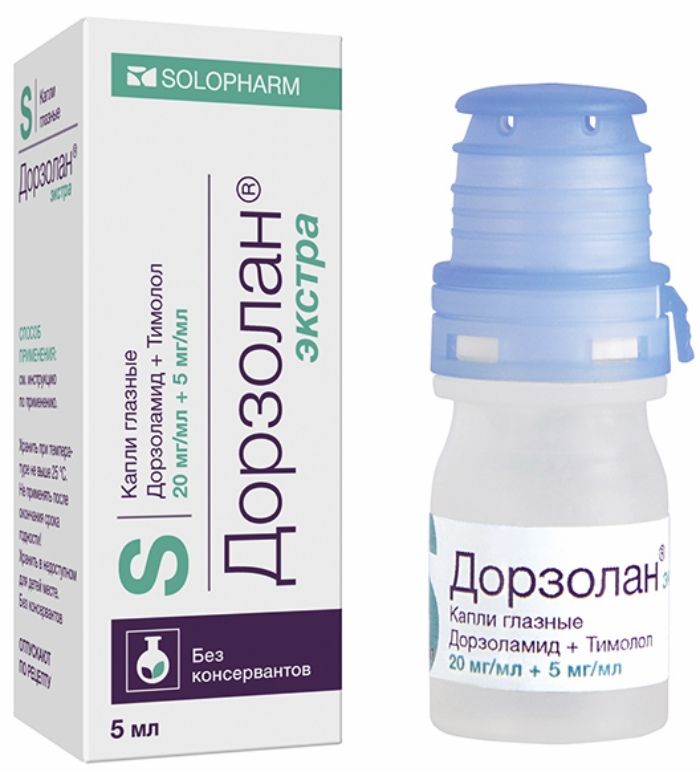
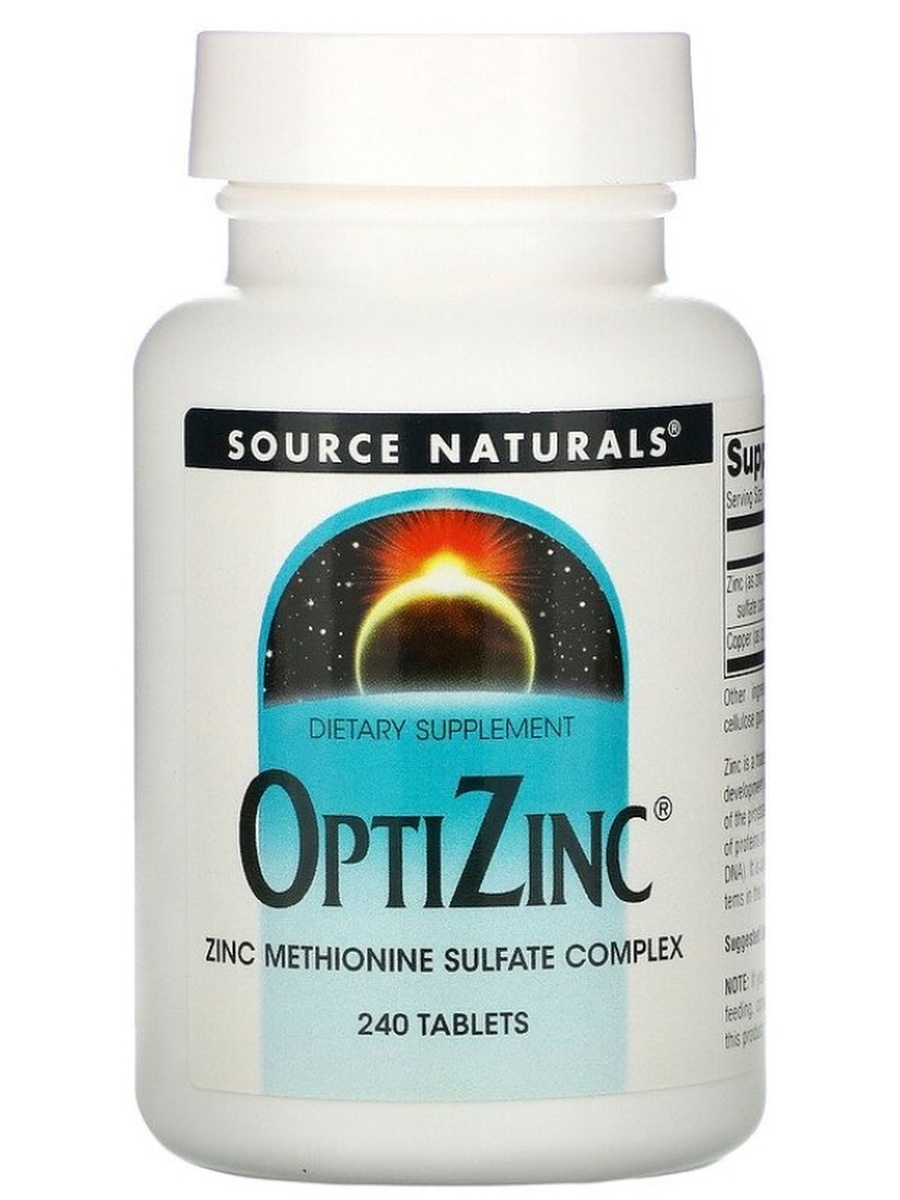
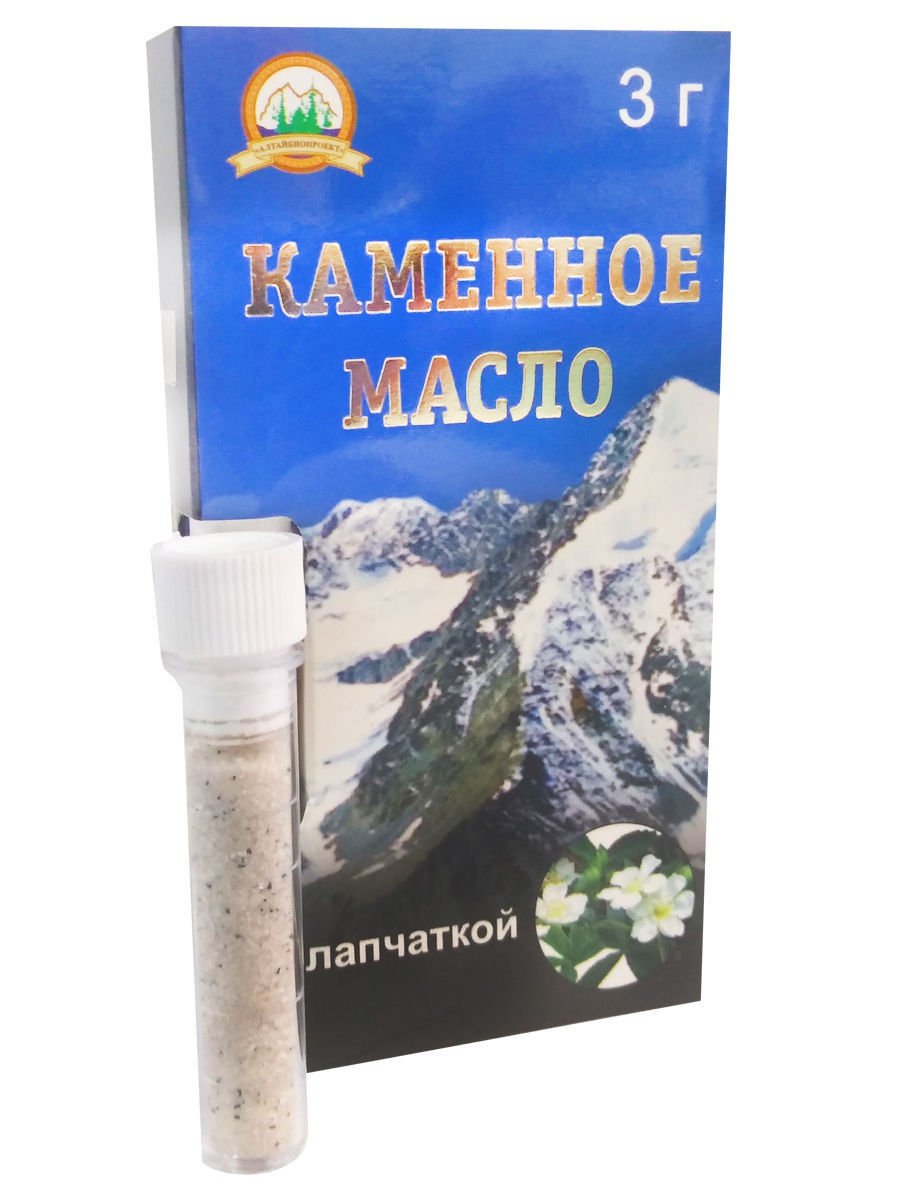
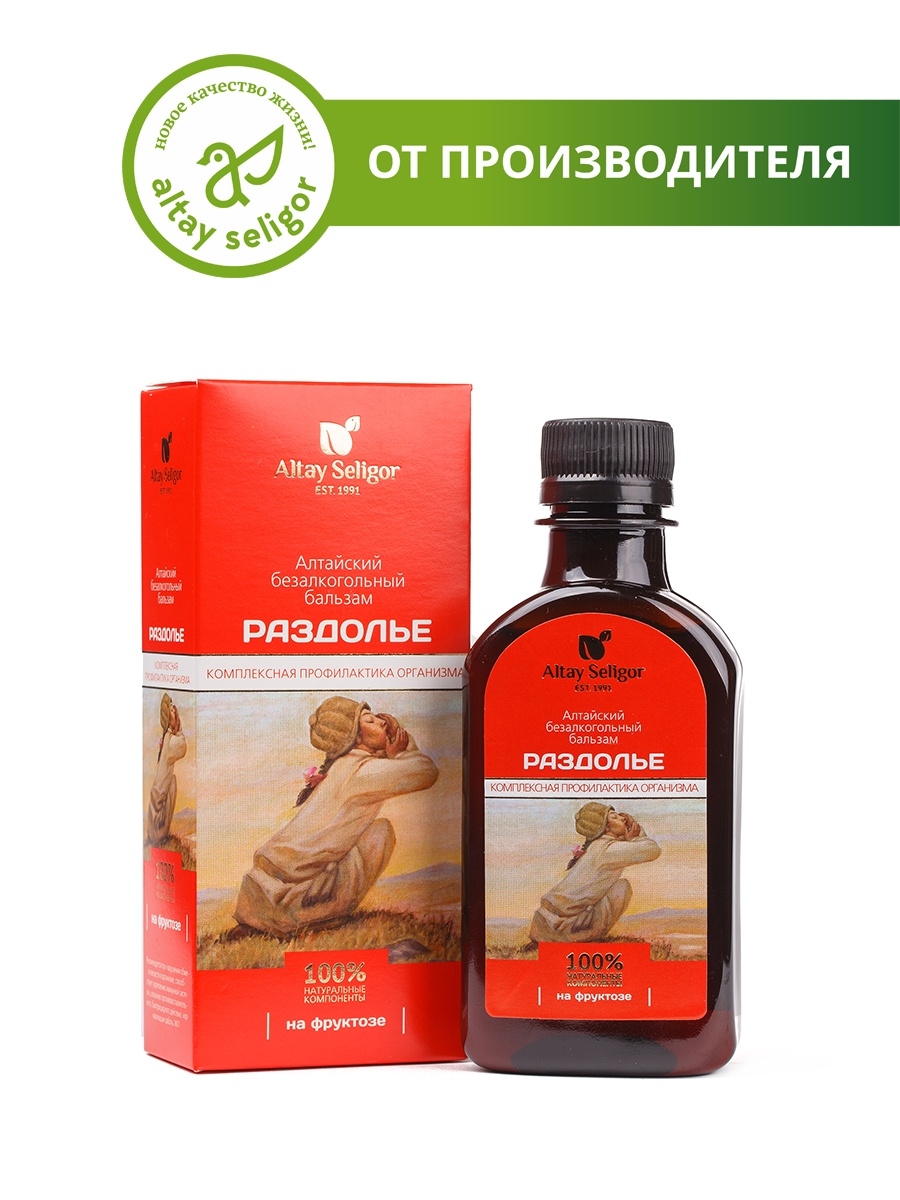
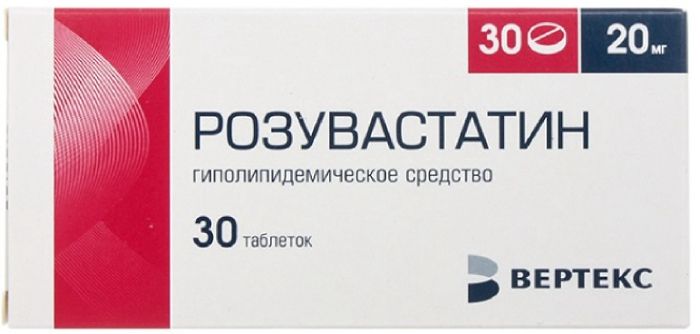
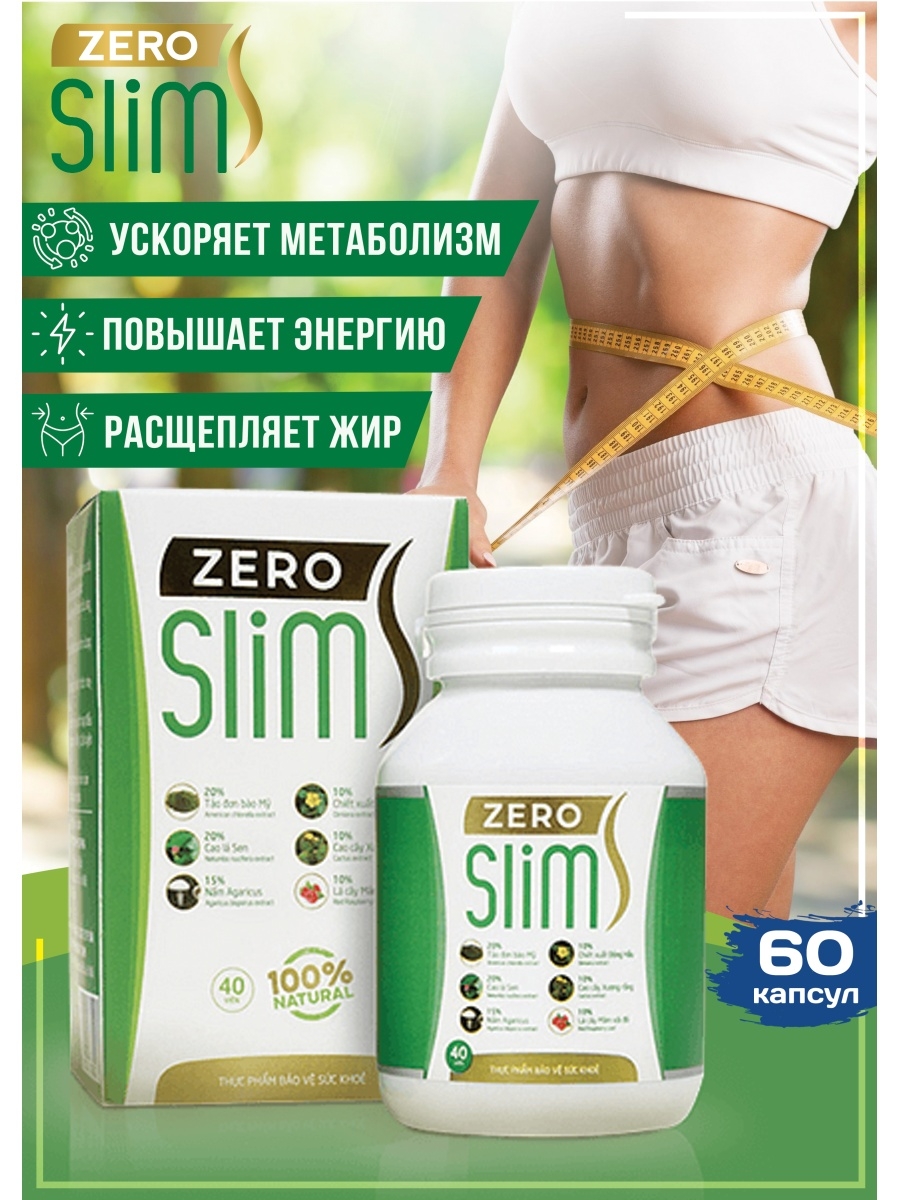
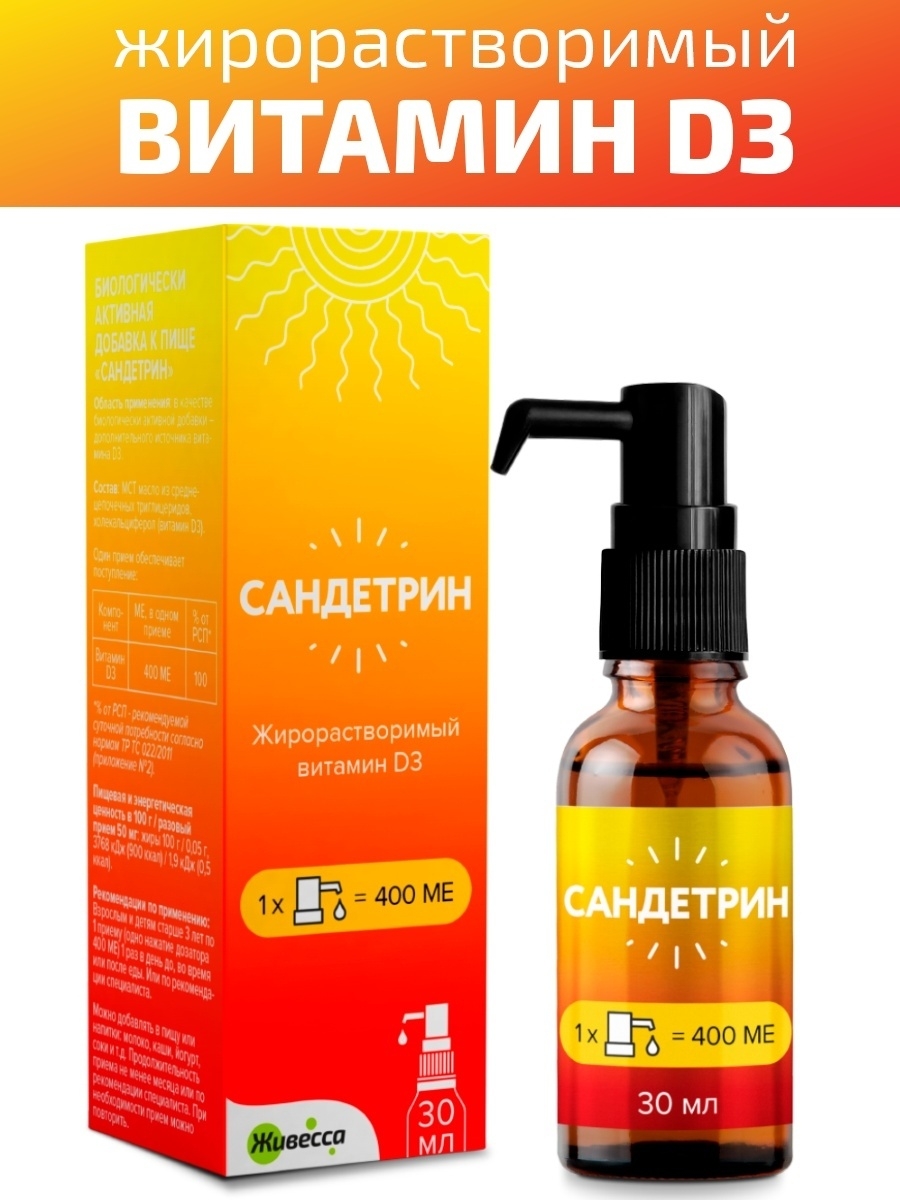




There are no reviews yet.